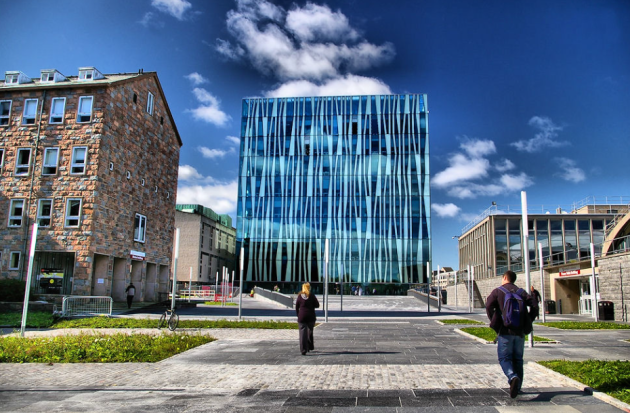The earliest charter was granted by William the Lion in 1179 and confirmed the corporate rights granted by David I.[17] In 1319, the Great Charter of Robert the Bruce transformed Aberdeen into a property-owning and financially independent community. Granted with it was the nearby Forest of Stocket, whose income formed the basis for the city's Common Good Fund which still benefits Aberdonians.[18][19] During the Wars of Scottish Independence, Aberdeen was under English rule, so Robert the Bruce laid siege to Aberdeen Castle before destroying it in 1308, followed by executing the English garrison. The city was burned by Edward III of England in 1336, but was rebuilt and extended. The city was strongly fortified to prevent attacks by neighbouring lords, but the gates were removed by 1770.[20] Aberdeen's medieval council registers survive from 1398 onwards and are exceptional for their quantity and continuity among surviving Scottish burgh records. The earliest eight volumes, from 1398 to 1511, have been included in the UNESCO UK Memory of the World Register, and have been edited in a digital edition.[21] During the Wars of the Three Kingdoms of 1644 to 1647 the city was plundered by both sides. In 1644, it was taken and ransacked by Royalist troops after the Battle of Aberdeen[22] and two years later it was stormed by a Royalist force under the command of the George Gordon, 2nd Marquis of Huntly.[23] An outbreak of bubonic plague over 1687 and 1688 killed 8.5% of the population, adding to the economic and demographic damage caused by war.[24] In the 18th century, a new Town Hall was built and the first social services appeared with the Aberdeen Infirmary at Woolmanhill in 1739[25] and the Aberdeen Lunatic Asylum in 1800.[26] View Of Aberdeen by William Mosman, 1756 The expensive infrastructure works led to the city becoming bankrupt in 1817 during the Post-Napoleonic depression, an economic downturn immediately after the Napoleonic Wars; but the city's prosperity later recovered. The increasing economic importance of Aberdeen and the development of the shipbuilding and fishing industries led to the construction of the present harbour including Victoria Dock and the South Breakwater, and the extension of the North Pier. Gas street lighting arrived in 1824 and an enhanced water supply appeared in 1830 when water was pumped from the Dee to a reservoir in Union Place. An underground sewer system replaced open sewers in 1865.[19] The city was incorporated in 1891. Although Old Aberdeen has a separate history and still holds its ancient charter, it was annexed by the City of Aberdeen in 1891.[27] Over the course of the Second World War Aberdeen was attacked 32 times by the German Luftwaffe. One of the most devastating attacks was on Wednesday 21 April 1943 when 29 Luftwaffe Dornier 217s flying from Stavanger, Norway attacked the city between the hours of 22:17 and 23:04.[28] A total of 98 civilians and 27 servicemen were killed, along with 12,000 houses damaged, after a mixture of 127 Incendiary, High Explosive and Cluster bombs were dropped on the city in one night.[29] Two books written in 2018 and 2022 using bombing records held in London identified that unexploded bombs from the 1943 raid were found in the 1950s and 1980s making the bombs dropped 129 in total. Damage from the raid can still be seen in some parts of Aberdeen




neil@weightmandigital.com
September 28, 2023 at 11:35 amI thought the entire experience was wonderful.
david lewis
October 10, 2023 at 9:29 amThank you very much for your kind words and lovely review.